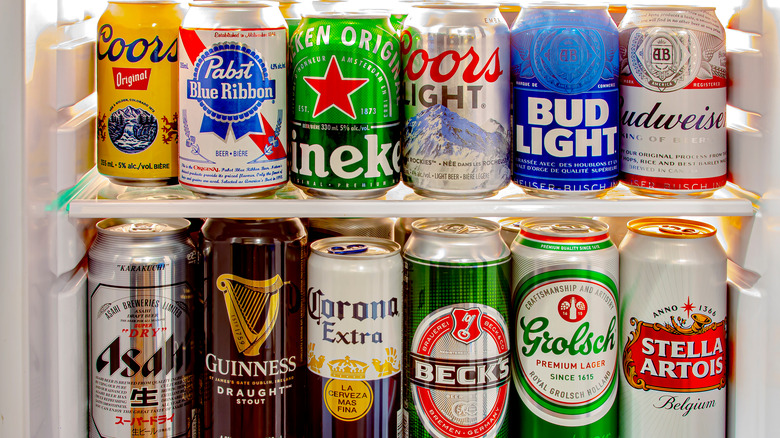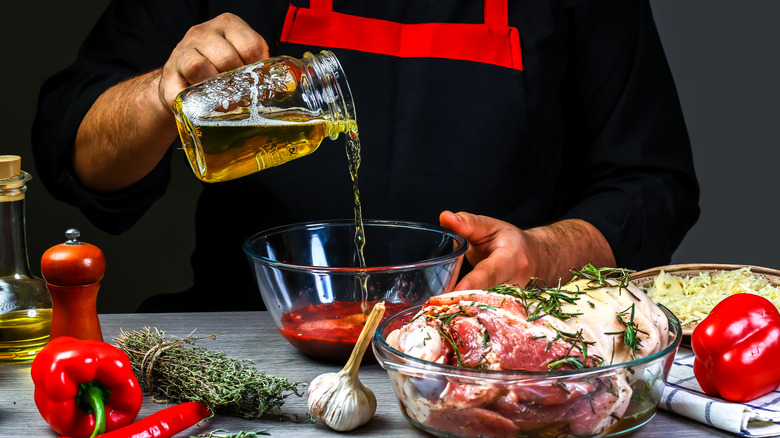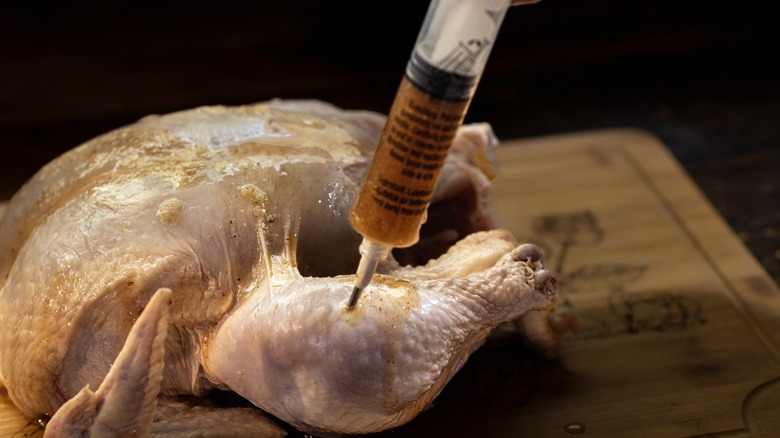Leftover Beer Is The Perfect Addition To Your Next Marinade
If you are like most people, chances are you have never had much of a problem figuring out what to do with the beer that is sitting in your fridge. After all, drinking it seems to work well as a simple, logical, and enjoyable way to ensure that none of your precious suds go to waste. But even the most dedicated ale-lover has overbought at some point in their life. Maybe it was that flop of a summer barbecue you threw where you invited 60 of your closest friends, but only 14 showed up, or perhaps somebody brought over a six-pack that you just didn't end up drinking. Whatever the circumstances, fear not, as those excess bottles and cans can be put to good use by simply adding some to your next marinade.
The brew's tastes and aromas (whether hoppy, malty, or sour) will add depth to your dish's overall flavor profile while also making for some exceptionally tender meat. But before you go mixing and matching with reckless abandon, there are a few things to keep in mind if you want to get the most out of your leftover beer marinade.
Mastering the marinade
One of the most fun and rewarding aspects of concocting any marinade is the level of experimentation and creativity that it allows. Finding the right ingredients to enhance your chosen meats, fish, or vegetables can take a bit of trial and error, but beer works particularly well as a starting point, because, in addition to adding flavor, it contains the enzymes endoprotease and exopeptidase, both of which help tenderize by breaking down proteins.
The carbonation present in beer adds to its acidity, which also helps to soften foods and make them extra tender. How acidic it is ultimately depends on the type of beer, though. Most ales have a pH range of 3 to 6, while all-barley malt lagers typically range between 4 and 5. Sour beers, on the other hand, can produce a pH as low as 3.30. Therefore, it's important to choose your brews wisely, as the more acidic the beer, the greater the ability it has to tenderize the protein you're preparing. This is especially important when figuring out ideal marination times — you'll want to give heartier meats like steak at least six hours, while fish, including salmon, only need a couple of hours to take on some of the beer's nuances.
Pairing your porters and proteins
The type of beer you choose should also correspond to the foods you plan on marinating. Steaks work well with dark beers such as stouts or porters. A beer-marinated bison strip steak is greatly enhanced by a marinade that uses Guinness or Murphy's stout, as the dark, roasty flavor and deep, full body of the beer will round out the robust earthiness of the red meat. Lighter proteins, such as seafood or chicken (and even some vegetables), will do best with lighter beers like lagers or pilsners, or even beers with fruit flavors, but you may want to avoid working with IPAs, as cooking will amplify the bitterness in overly hoppy beers.
Another possibility worth exploring is the idea of injecting your meat with beer directly. As opposed to the soaking method adhered to when marinating, this technique involves the use of a meat injector to send the beer (or a beer marinade) directly into the fibers of the protein of your choice. This works especially well with larger cuts of meat such as whole turkeys, chickens, pork shoulders, and briskets. The injecting process makes it possible for the flavors to go deep into the tissue where a marinade would otherwise not be able to penetrate. And all the while, you thought beer was just for chugging?


